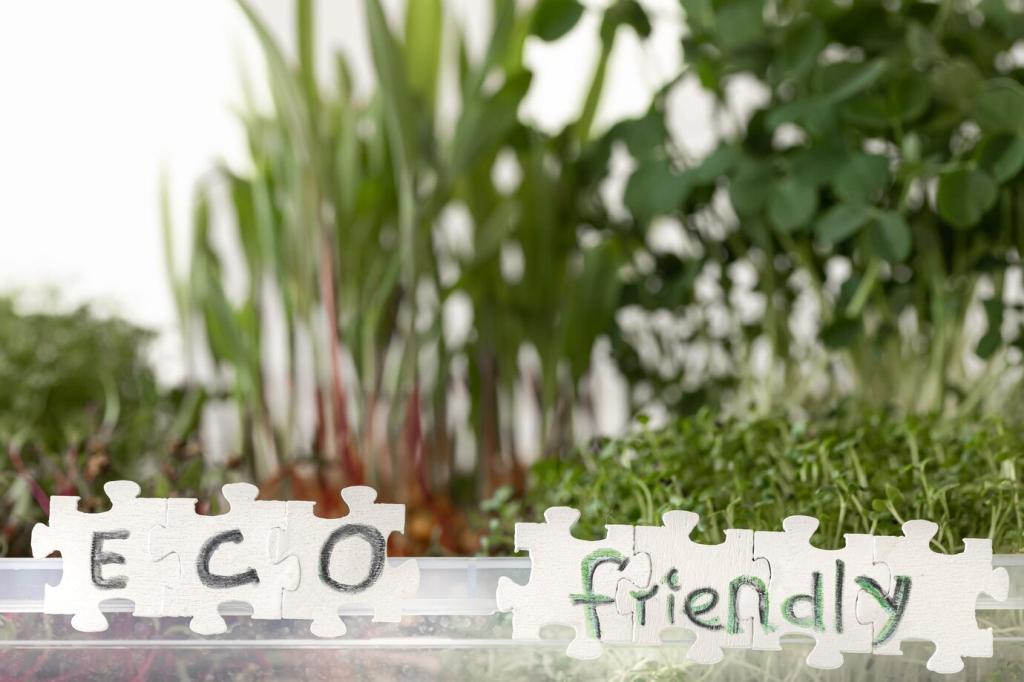Natural Insulation Materials for Homes: Cozy, Quiet, and Earth‑Kind
Chosen theme: Natural Insulation Materials for Homes. Step into a warmer, healthier living space where wool, cellulose, cork, hemp, straw, and wood fiber turn walls into comfort. We share practical design tips, field stories, and science-backed insights to help you choose natural insulation that fits your climate, budget, and values. Join the conversation, ask questions, and subscribe for fresh, hands-on guidance.



Why Natural Insulation Belongs in Modern Homes
Cellulose typically delivers around R‑3.2 to R‑3.8 per inch, wood fiber boards hover near R‑3.7, cork often lands between R‑3.6 and R‑4.2, and sheep’s wool is comparable. Numbers matter, but what you feel daily is steady warmth and far fewer drafts.
Why Natural Insulation Belongs in Modern Homes
Unlike fully vapor-closed systems, many natural materials gently absorb and release humidity, reducing condensation risk and helping walls dry. Wool can hold moisture yet stay warm, while cellulose and wood fiber buffer spikes, making comfort more stable through seasons.
Meet the Materials: Wool, Cellulose, Cork, Hemp, Straw, and Wood Fiber
Wool batts are springy, easy to handle, and can absorb up to roughly 30% of their weight in moisture without feeling wet. With inherent keratin and often added safe treatments, wool resists flame spread and rebounds nicely after minor compression during installation.



Designing for Climate and Building Type
In snowy regions, prioritize airtightness and continuous insulation to keep sheathing warm. Pair dense-pack cellulose or wool with wood fiber boards outside for thermal breaks. Maintain a smart vapor control strategy so assemblies can dry safely in both directions.
Designing for Climate and Building Type
Where summers are sticky, assemblies should quickly shed inward humidity and outward rain. Choose natural materials that buffer moisture, use vapor-open exterior layers, and ensure mechanical dehumidification is addressed so walls remain comfortable and mold pressure stays low.

Air sealing is the quiet hero of comfort
Before insulating, seal cracks, rim joists, and penetrations. Even high‑R materials struggle against uncontrolled air leaks. Use tapes, gaskets, and sealants rated for your membranes, then test with a blower door to verify that your home truly holds still air.

DIY or pro install: know your thresholds
Batts of wool or hemp are approachable for careful DIYers. Dense-pack cellulose, by contrast, benefits from pros who can measure density and avoid voids. If you enjoy hands-on work, consider tackling prep, air sealing, and simple bays while hiring out tricky areas.

Detailing around lights, wires, and odd cavities
Recessed cans, junction boxes, and diagonal braces create gaps if rushed. Create backer panels where needed, fit batts without stuffing, and maintain proper clearances. The goal is full contact with cavity surfaces so heat and sound have no easy pathways.

Borate treatments help cellulose resist flame, insects, and fungi without the harsh odors of some alternatives. Combined with an air‑tight assembly and roof and flashing details that shed water, cellulose becomes a steady, time‑tested core of resilient wall systems.

Wool fibers contain keratin that self‑chars under flame, but moths can be a concern without proper treatment. Reputable products use safe deterrents, and correct storage during construction helps. Once sealed in assemblies, moth risks drop dramatically in normal conditions.

Roofs leak and pipes sweat, so allow assemblies to dry. Favor vapor‑open exterior layers like wood fiber or ventilated rainscreens. Inside, smart membranes shift permeability seasonally, helping materials release incidental moisture before it becomes a durability problem.
Dense cellulose and cork absorb mid‑ to high‑frequency noise, while wood fiber boards add mass and decouple layers. Home offices feel less echoey, and open-plan spaces sound more civilized. You will hear fewer footsteps, fewer clangs, and more of your own thoughts.
Sound and Fire Performance with Natural Insulation
Materials and assemblies are tested together, so follow rated details. Cellulose uses fire retardants, wool chars instead of melting, and wood fiber boards pair with gypsum to achieve ratings. Ask manufacturers for documentation that aligns with your local code path.
